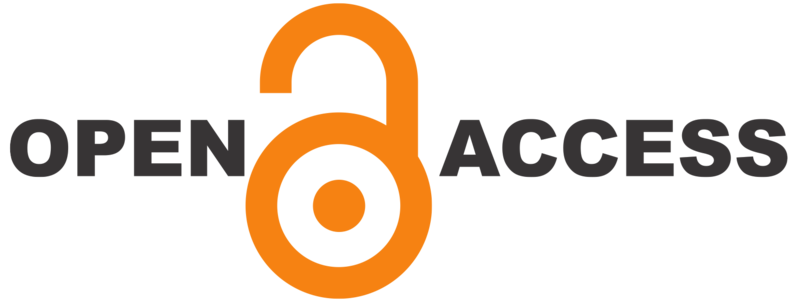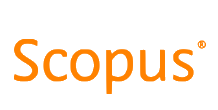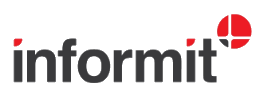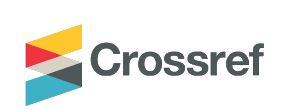From uncertainty to clarity: A career plan task empowering first-year university students
DOI:
https://doi.org/10.21153/jtlge2025vol16no1art2131Abstract
This study explored the development and implementation of a Career Plan assessment task within an undergraduate degree. The task was designed to support first-year university students in exploring and positively developing their professional identity and confidence in achieving their career goals. Embedded within the curriculum, the assessment required students to complete five structured steps: Source, Analyse, Identify, Develop and Reflect. Through these steps, students identified, explored and demonstrated their self- and career-opportunity awareness, recognised and developed their employability skills and career aspirations, and clarified their sense of purpose for their future career direction. Evaluation of this task highlighted its positive impact on students, revealing growth in their confidence and professional identity. The structured nature of the task provided a clear framework for career planning, equipping students with practical skills and fostering a deeper understanding of their career aspirations. Overall, the findings demonstrate that this career planning intervention was both effective and highly valued by students, supporting their vocational development and career readiness during their transition into university life.
Metrics
References
Amiet, D., Choate, J., Hoskin, J., & Dart, J. (2020). Exploring attitudes, beliefs and practices of academic staff towards undergraduate career development in non-vocational courses. Higher Education Research & Development, 40(5), 885–900. https://doi.org/10.1080/07294360.2020.1799952
Astin, A. W., Astin, H. S., & Lindholm, J. A. (2010). Cultivating the spirit: How college can enhance students’ inner lives. Jossey-Bass.
Jobs and Skills Australia. (2024). Occupation shortage list. Australian Government https://www.jobsandskills.gov.au/data/occupation-shortages-analysis/occupation-shortage-list
Boyle, P. A., Barnes, L. L., Buchman, A. S., & Bennett, D. A. (2010). Effect of a purpose in life on risk of incident Alzheimer disease and mild cognitive impairment in community-dwelling older persons. Archives of General Psychiatry, 67(3), 304–310. https://doi.org/10.1001/archgenpsychiatry.2009.208
Braun, V., & Clarke, V. (2006). Using thematic analysis in psychology. Qualitative Research in Psychology, 3(2), 77–101. https://doi.org/10.1191/1478088706qp063oa
Braun, V., & Clarke, V. (2022). Toward good practice in thematic analysis: Avoiding common problems and be(com)ing a knowing researcher. International Journal of Transgender Health, 24(1), 1–6. https://doi.org/10.1080/26895269.2022.2129597
Bridgstock, R. (2009). The graduate attributes we’ve overlooked: Enhancing graduate employability through career management skills. Higher Education Research & Development, 28(1), 31–44. https://doi.org/10.1080/07294360802444347
Brown, P., Lauder, H., & Cheung, S. Y. (2020). The death of human capital? Its failed promise and how to renew it in an age of disruption. Oxford University Press. https://doi.org/10.1093/oso/9780190644307.001.0001
Bundick, M. J., Yeager, D. S., King, P. E., & Damon, W. (2010). Thriving across the life span. In W. F. Overton & R. M. Lerner (Eds.), The handbook of life-span development, Vol. 1. Cognition, biology, and methods (pp. 882-923). John Wiley & Sons Inc. https://doi.org/10.1002/9780470880166.hlsd001024
Clydesdale, T. (2015). The purposeful graduate: Why colleges must talk to students about vocation. The University of Chicago Press.
Damon, W. (2008). Path to purpose: How young people find their calling in life. Free Press.
Damon, W., Menon, J., & Bronk, K. C. (2003). The development of purpose during adolescence. Applied Developmental Science, 7(3), 119–128. https://doi.org/10.1207/S1532480XADS0703_2
Deloitte Access Economics. (2016). Estimating the public and private benefits of higher education. Department of Education and Training, Australian Government. https://tinyurl.com/493uxjf7
Fajaryati, N., Budiyono, Akhyar, M., & Wiranto. (2020). The employability skills needed to face the demands of work in the future: Systematic literature reviews. Open Engineering, 10(1), 595–603. https://doi.org/10.1515/eng-2020-0072
Fouad, N. A., Ghosh, A., Chang, W., Figueiredo, C., & Bachhuber, T. (2016). Career exploration among college students. Journal of College Student Development, 57(4), 460–464. https://dx.doi.org/10.1353/csd.2016.0047
Fugate, M., & Kinicki, A. J. (2008). A dispositional approach to employability: Development of a measure and test of implications for employee reactions to organizational change. Journal of Occupational and Organizational Psychology, 81(3), 503–527. https://doi.org/10.1348/096317907X241579
Gu, X., Tang, M., Chen, S. & Montgomery, M.L.T. (2020). Effects of a career course on Chinese high school students’ career decision-making readiness. The Career Development Quarterly, 68(3), 222–237. https://doi.org/10.1002/cdq.12233
Hackett, G., & Betz, N. E. (1995). Self-efficacy and career choice and development. In J. E. Maddux (Ed.), Self-efficacy, adaptation, and adjustment: Theory, research, and application (pp. 249-280). Springer. https://doi.org/10.1007/978-1-4419-6868-5_9
Harris-Reeves, B. (2023). From passion to profession: An employability framework in sport development. Journal of Teaching and Learning for Graduate Employability, 14(1), 237–247. https://doi.org/10.21153/jtlge2023vol14no1art1762
Harris-Reeves, B. E., Pearson, A. G., Vanderlelie, J. J., & Massa, H. M. (2024). The value of employability-focused assessment: Student perceptions of career readiness. Journal of Teaching and Learning for Graduate Employability, 15(1), 186–204. https://doi.org/10.21153/jtlge2024vol15no1art1903
Harris-Reeves, B., & Mahoney, J. (2017). Brief work-integrated learning opportunities and first-year university students’ perceptions of employability and academic performance. Australian Journal of Career Development, 26(1), 32–37. https://doi.org/10.1177/1038416217697974
Harris-Reeves, B., Pearson, A., & Massa, H. (2022). Exploring the expectations and experiences of first-year students undergoing a tailored transition initiative. Journal of University Teaching and Learning Practice, 19(3), 16. https://doi.org/10.53761/1.19.3.15
Hartung, P. J., Porfeli, E. J., & Vondracek, F. W. (2005). Child vocational development: A review and reconsideration. Journal of Vocational Behavior, 66(3), 385–419. https://doi.org/10.1016/j.jvb.2004.05.006
Herbert, I. P., Rothwell, A. T., & Glover, J. L., & Lambert, S. A. (2020). Graduate employability, employment prospects and work-readiness in the changing field of professional work. The International Journal of Management Education, 18(2), 1–13. https://doi.org/10.1016/j.ijme.2020.100378
Herr, E. L. (2001). Career development and its practice: A historical perspective. The Career Development Quarterly, 49(3), 196–211. https://doi.org/10.1002/j.2161-0045.2001.tb00562.x
Hill, P. L., & Turiano, N. (2014). Purpose in life as a predictor of mortality across adulthood. Psychological Science, 25(7), 1482–1486. https://doi.org/10.1177/0956797614531799
Hinchliffe, G., & Jolly, A. (2011). Graduate identity and employability. British Educational Research Journal, 37(4), 563–584. https://doi.org/10.1080/01411926.2010.482200
Hoi, M. M. N., & Hiebert, B. (2005). Career development of first-year university students: A test of Astin's career development model. Canadian Journal of Career Development, 4(2), 22–31. https://cjcd-rcdc.ceric.ca/index.php/cjcd/article/view/288
Jackson, D. (2017). Developing pre-professional identity in undergraduates through work-integrated learning. Higher education, 74(5), 833–853. https://doi.org/10.1007/s10734-016-0080-2
Jaensch, V. K., Hirschi, A., & Freund, P. A. (2015). Persistent career indecision over time: Links with personality, barriers, self-efficacy, and life satisfaction. Journal of Vocational Behavior, 91, 122–133. https://doi.org/10.1016/j.jvb.2015.09.010
Jobs and Skills Australia. (2024). Better together: The Jobs and Skills Report 2024. Commonwealth of Australia. https://www.jobsandskills.gov.au/publications/jobs-and-skills-report-2024
Johnson, B., & Main, J. B. (2020, June 22-26). The influence of experiential learning on student professional development: A literature review [Paper presentation]. 2020 ASEE Virtual Annual Conference Content Access, Virtual online. https://doi.org/10.18260/1-2--35344
Kuh, G. D. (2008). High-impact educational practices: What they are, who has access to them, and why they matter (Vol. 9). Association of American Colleges and Universities. http://hdl.voced.edu.au/10707/232146
Kuh, G. D. (2016). Making learning meaningful: Engaging students in ways that matter to them. New Directions for Teaching and Learning, 2016(145), 49–56. https://doi.org/10.1002/tl.20174
Kumar, A. (2007). Personal, academic & career development in higher education. Routledge. https://doi.org/10.4324/9780203938348
Lam, M., & Santos, A. (2018). The impact of a college career intervention program on career decision self-efficacy, career indecision, and decision-making difficulties. Journal of Career Assessment, 26(3), 425–444. https://doi.org/10.1177/1069072717714539
Lave, J., & Wenger, E. (1991). Situated learning: Legitimate peripheral participation. Cambridge University Press. https://doi.org/10.1017/CBO9780511815355
Lewis, A., Jackson, D., & Bennett, D. (2025). Perceived professional identity formation and influencing characteristics among speech pathology students. Journal of Teaching and Learning for Graduate Employability, 16(1), 39–58. https://doi.org/10.21153/jtlge2025vol16no1art2093
Lizzio, A. (2006). Designing an orientation and transition strategy for commencing students: A conceptual summary of research and practice. First Year Experience Project, Griffith University.
Lizzio, A., & Wilson, K. (2010, June 27-30). Strengthening commencing students’ sense of purpose: Integrating theory and practice [Paper presentation]. 13th Pacific Rim First Year in Higher Education Conference, Adelaide: Australia. https://unistars.org/past_papers/papers10/content/pdf/12D.pdf
Locke, E. A., & Latham, G. P. (2002). Building a practically useful theory of goal setting and task motivation: A 35-year odyssey. American Psychologist, 57(9), 705–717. https://doi.org/10.1037/0003-066X.57.9.705
Malin, H. (2023). Engaging purpose in college: A person-centered approach to studying purpose in relation to college experiences. Applied Developmental Science, 27(1), 83–98. https://doi.org/10.1080/10888691.2022.2033120
McArdle, S., Waters, L., Briscoe, J. P., & Hall, D. T. T. (2007). Employability during unemployment: Adaptability, career identity and human and social capital. Journal of Vocational Behavior, 71(2), 247–264. https://doi.org/10.1016/j.jvb.2007.06.003
Miller, A. K., Osborn, D. S., Sampson Jr, J. P., Peterson, G. W., & Reardon, R. C. (2018). The impact of a college career course on students’ career decision states. The Career Development Quarterly, 66(4), 371–377. https://doi.org/10.1002/cdq.12157
Monks, K., Conway, E., & Dhuigneain, M. N. (2006). Integrating personal development and career planning: The outcomes for first year undergraduate learning. Active Learning in Higher Education, 7(1), 73–86. https://doi.org/10.1177/1469787406063216
Norton, A. (2023). Mapping Australian higher education 2023. ANU Centre for Social Research and Methods. https://tinyurl.com/73entryk
Norton, A., & Cakitaki, B. (2016). Mapping Australian higher education 2016. Grattan Institute. https://grattan.edu.au/report/mapping-australian-higher-education-2016/
Peterson, G. W., Sampson, J. P., Jr., & Reardon, R. C. (1991). Career development and services: A cognitive approach. Thomson Brooks/Cole Publishing Co.
Reese, R. J., & Miller, C. D. (2006). Effects of a university career development course on career decision-making self-efficacy. Journal of Career Assessment, 14(4), 472–489. https://doi.org/10.1177/1069072705283764
Rudolph, C. W., Katz, I. M., Lavigne, K. N., & Zacher, H. (2017). Job crafting: A meta-analysis of relationships with individual differences, job characteristics, and work outcomes. Journal of Vocational Behavior, 102, 112–138. https://doi.org/10.1016/j.jvb.2017.05.008
Rutina, K., & Soika, I. (2020, June). Career guidance for first-year students in work-based learning. In The Proceedings of the International Scientific Conference Rural Environment, Education, Personality (REEP) (Vol. 13, pp. 441-449). https://doi.org/10.22616/REEP.2020.052
Savickas, M. L., Nota, L., Rossier, J., Dauwalder, J.-P., Duarte, M. E., Guichard, J., Soresi, S., Van Esbroeck, R., & van Vianen, A. E. M. (2009). Life designing: A paradigm for career construction in the 21st century. Journal of Vocational Behavior, 75(3), 239–250. https://doi.org/10.1016/j.jvb.2009.04.004
Savickas, M. L., Porfeli, E. J., Hilton, T. L., & Savickas, S. (2018). The student career construction inventory. Journal of Vocational Behavior, 106, 138–152. https://doi.org/10.1016/j.jvb.2018.01.009
Song, Z. (2024). Personal growth and well-being among university students: A comprehensive analysis. Journal of Education in Black Sea Region, 9(2), 39–47. https://doi.org/10.31578/jebs.v9i2.316
Stebleton, M. J., & Diamond, K. K. (2018). Advocating for career development and exploration as a high-impact practice for first-year students. Journal of College and Character, 19(2), 160–166. https://doi.org/10.1080/2194587X.2018.1445646
Strauss, A., & Corbin, J. (1998). Basics of qualitative research: Techniques and procedures for developing grounded theory (2nd ed.). Sage Publications, Inc.
Super, D. E. (1953). A theory of vocational development. American Psychologist, 8(5), 185–190. https://doi.org/10.1037/h0056046
Tabachnick, B. G., & Fidell, L. S. (2019). Using multivariate statistics (7th ed.). Pearson.
Tertiary Education Quality and Standards Agency (TEQSA). (2025). National register. Australian Government. https://www.teqsa.gov.au/national-register
Tinto, V. (2017). Reflections on student persistence. Student Success, 8(2), 1–8. https://doi.org/10.5204/ssj.v8i2.376
Torrent-Sellens, J., Ficapal-Cusí, P., & Boada-Grau, J. (2016). Dispositional employability and online training purchase: Evidence from employees’ behavior in Spain. Frontiers in Psychology, 7, Article 831, 1–15. https://doi.org/10.3389/fpsyg.2016.00831
Trede, F., Macklin, R., & Bridges, D. (2012). Professional identity development: A review of the higher education literature. Studies in Higher Education, 37(3), 365–384. https://doi.org/10.1080/03075079.2010.521237
Van Antwerpen, S., & Van Schalkwyk, R. D. (2024). Governmental student funding systems for higher education: An international perspective. The Journal of Quality in Education, 14(23), 1–15. https://doi.org/10.37870/joqie.v14i23.418
Waddell, J., Spalding, K., Canizares, G., Navarro, J., Connell, M., Jancar, S., Stinson, J., & Victor, C. (2015). Integrating a career planning and development program into the baccalaureate nursing curriculum: Part I. Impact on students’ career resilience. International Journal of Nursing Education Scholarship, 12(1), 163–173. https://doi.org/10.1515/ijnes-2014-0035
Wei, Y. C. (2025). Effects of career course assignment design on undergraduates’ career self-efficacy and exploration. Asia Pacific Journal of Education, 45(1), 100–112. https://doi.org/10.1080/02188791.2022.2074372
Yiming, Y., Shi, B., Kayani, S., & Biasutti, M. (2024). Examining the relationship between self-efficacy, career development, and subjective wellbeing in physical education students. Scientific Reports, 14(1), 8551. https://doi.org/10.1038/s41598-024-59238-6
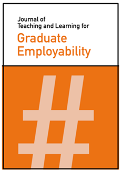
Downloads
Published
Issue
Section
License
Copyright (c) 2025 Brooke E Harris-Reeves, Andrew Pearson, Helen Massa

This work is licensed under a Creative Commons Attribution-NonCommercial 4.0 International License.





